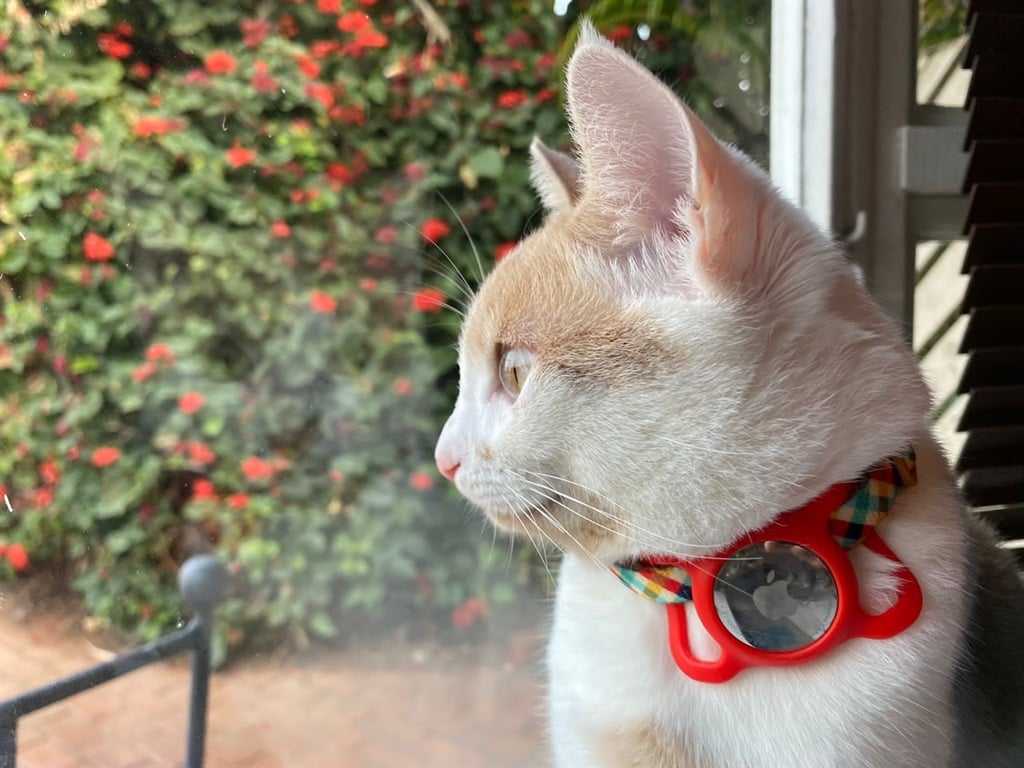- Pets regularly go missing in South Africa.
- There are a variety of products that can track pets.
- There are benefits and drawbacks to the different products.
- For more stories, visit the Tech and Trends homepage.
Pets in South Africa go missing surprisingly often according to Gavin Levenstein, the CEO of TailMe, a company that provides an array of products for pets, including GPS pet-tracking devices.
And while animals have returned in some miraculous cases after they went missing for extended periods of time, reunions can’t always be guaranteed.
“Pets going missing is a daily occurrence. There won’t be a day that goes by that we won’t receive a report about a lost or found pet,” said Allan Perrins, the communications head at the Animal Welfare Society of South Africa.
Many people are under the false impression that the microchips that are frequently inserted into pets can be used to track pets, he said.
But, “your normal microchip isn’t really a tracking device, it’s just a reliable identification device”, he added.
However, there are external devices that can be used to track pets.
The fact that the devices are external means that they can be stolen, removed, or fall out, he added.
But, tracking devices are usually external because no tracking device has an indefinite lifespan, he pointed out.
Both Bluetooth and GPS devices are often used to track pets, but while there are pros to the devices, there are also cons.
Here is a breakdown of the pros and cons:
Bluetooth
Bluetooth is a technology standard that allows for the wireless transfer of data across reasonably short distances.
When a Bluetooth device is connected to a pet by the collar, it is possible for someone who has a linked Bluetooth-enabled device to see where the pet is.
An Apple AirTag is a commonly used Bluetooth tracking device for pets, and a variety of collars that have slots for AirTags are available on popular e-commerce sites.
Bluetooth tracking devices are more affordable than alternatives, with a single AirTag selling for R749 at the iStore in South Africa.
Bluetooth trackers also generally have a very long battery life with the Airtag battery lasting for around a year. It is easily replaceable once it runs out.
Most Bluetooth trackers are small and lightweight, meaning they shouldn’t bother the pet.
The main constraint of a Bluetooth tracker for pets is the range, according to Levenstein.
The maximum range of a Bluetooth device is around 10 metres, but this varies, depending on objects between the devices connected by Bluetooth.
If you want to track your pet using your device, this is the standard range, but tracking devices such as AirTags or the Galaxy Smart Tag allows for the location of the device to be directed by other devices on the same network.
So, for instance, the Airtag is discoverable by other devices that have the Find My Network feature enabled.
Streetwise Pets, another company that provides GPS-tracking technology for pets, shared a post with News24 that explains the limitations of this tool if the pet gets lost in a rural area.
The post stated that Bluetooth tracking devices were useful for tracking a pet in your own house, but it was more difficult if the pet escaped outside in a rural area because they wouldn’t necessarily come into contact with a device on the same network.
“If they end up in a remote area it would be an unfortunate turn of events and the pet might possibly never be found.”
GPS trackers
GPS trackers offer an alternative to Bluetooth devices.
GPS stands for global positioning system, which is a satellite-based navigation system.
The devices TailMe sells have SIM cards inserted into them that are loaded with either data, or prepaid airtime which can be converted into data.
Their infinity trackers are 4G enabled which allows pet owners to use GPS to track their pets wherever they go.
In addition, it is possible to connect a call to a tracker so that the owner can hear what’s happening wherever the pet is and make it ring, said Levenstein.
A mobile app is used.
The size of the infinity tracker is around 6.5 centimetres by 3.5 centimetres.
Levenstein said:
Size is actually not as important as most people realise.
People think the tracker might look bulky and get in the way of their pet, he said. But, generally, the bigger issue with trackers is the weight, he added.
He said TailMe’s product weighs less than 40 grams, which is not an issue for cats and dogs.
However, GPS trackers, including the Infinity tracker, are generally more expensive than Bluetooth trackers.
The infinity tracker sells for R1 849, with no monthly fee, other than the cost of loading prepaid airtime or data onto the SIM card.
Levenstein said he loaded R150 of prepaid airtime onto a tracker he started using in 2018 for his cat and he has only just had to recharge it.
Prohibitive pricing
Perrins said the price of the tracking units would be prohibitive for many pet owners.
“We at the animal welfare society really are staunch advocates on the microchipping of pets. Our offering is 100 bucks for a microchip – we make pretty much nothing out of it and we struggle to get people to do it.”
Deon van der Westhuizen, the owner of Pet Systems, a company that provides a variety of pet products in South Africa, said his company stopped providing pet tracking products several years ago.
“To be honest we discontinued the unit we sold (a few years ago already), as the support we received from the agents was not in line with the type of service we pride ourselves on.”
In his opinion, the pet-tracking products that are available in South Africa leave a lot to be desired.





















Discussion about this post